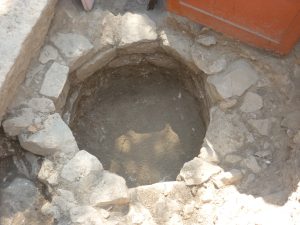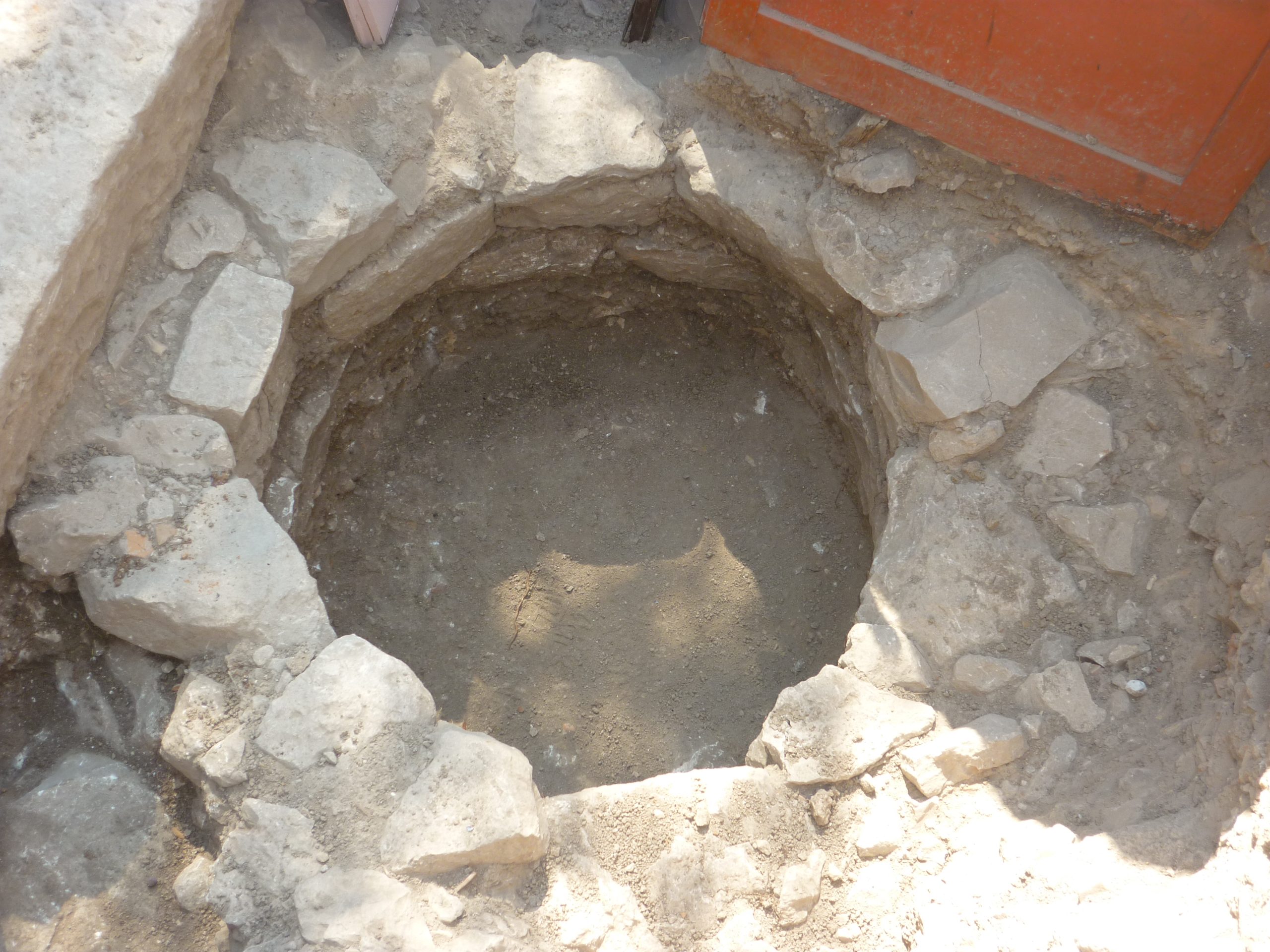WHILE observing the excavation within the schoolyard at the back of the mosque last week, I thought the archaeologists had found the clue that would have revealed the ‘new’ temple was, indeed, dedicated to Apollo’s twin sister Artemis.
Eureka moment
The trench was approaching a depth of 2.5 metres when another stone structure was encountered.
The labourers jumped out, and the archaeologists dived in, to slowly peel back the last layers of earth. Gradually a circular structure began to emerge from the depths of time itself. The centre of the circular structure was vacant of any human laid stone.
Surely, it must be a well. Though is it the well mentioned in an ancient script?

An inscription upon stone and dated to the 2nd century BCE is extant, and tells of a well in close proximity to the temple dedicated to Artemis, and inferred the possibility the well also consisted of a golden statue adorning the structure.
Naturally, there is no sign of any golden statue any longer, not to my knowledge at least, though could this be the well? Of course, one’s natural feelings are to convince oneself that it is, but wishing doesn’t contain evidence.
Back to the library
As I knew that the ‘vow of silence’ taken by the archaeologists would prevent me gaining any information there, I decided to retire to my library to delve into some research.
Joseph Fontenrose’s epic opus, though a little dated, was the first to be consulted; “Didyma. Apollo’s Oracle, Cult, and Companions”, a veritable authority for anyone studying the Temple of Apollo.
I quickly grabbed the book and frantically leafed through the index to locate the pages concerning the Hydrophors of Artemis Pythie, and then read rapidly. A ‘hydrophor’ was the priestess who took water (from the well?). The inscription is also quoted.
I then pondered over the maps I have of this temple to locate precisely where the well was in relation to the building. It was then my euphoria plummeted.
Too many questions to be evidence
The well is in the wrong position. It should be in front, or near, the entrance, but the positioning is to the back. That simply couldn’t be correct.
Unless, of course, the temple faced west, not east. Unusual, though not impossible, for the Temple of Artemis at Ephesus also has a west facing entrance. The original architects could have considered that into their design. The two buildings were almost certainly contemporary.
If, indeed, the temple does face west then the altar should also be located in the schoolyard. The altar was always to the front of any temple.
Also, is this well flush to the temple’s foundations, or slightly under? That is a difficult one to call, as it is so close as to be a matter of opinion. Obviously, if it is under, then the well must be older.
The construction of the stonework appears rather rough hewn, and nothing like the elegance found on the extremely fine masonry adorning the Hellenistic well in front of Apollo’s Temple.
In fact this new well is so similar to so much construction throughout many centuries that it is impossible, for me, to date.
Or, is it even a well at all? There are numerous examples of pits dug around temples into which were placed the votive offerings to the gods. The Greeks called them ‘bothroi’. This in itself would be an interesting and quite seductive find, though not, alas, the historical revelation I was anticipating.
As always, a find always appears to throw up more questions than it solves. In my opinion, I believe this is probably not the well mentioned on the ancient inscription. I’ll be the first to say that I don’t know, but the evidence appears to be pointing that way.
